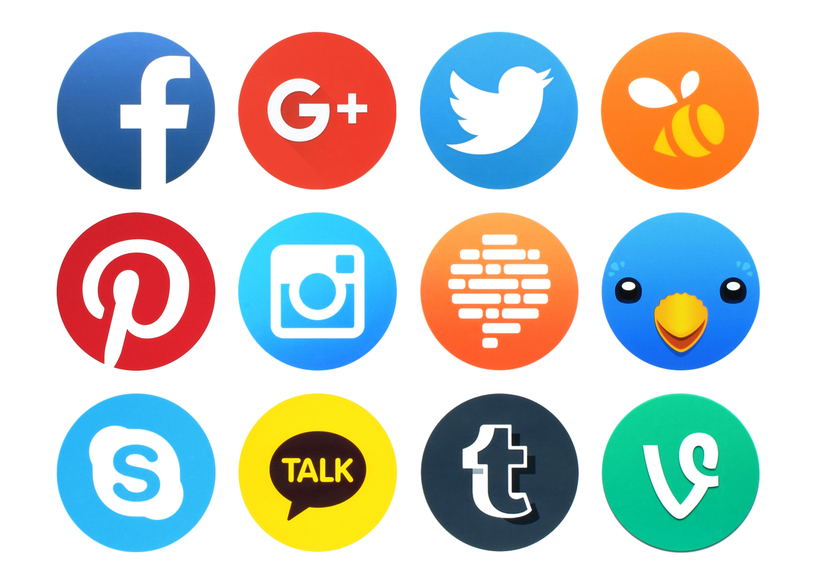So, Is Social Selling Just…Selling?
- Even the most social media-phobic salesperson knows that participating can help then, even if they aren’t motivated enough to dive in
- Social selling has moved far beyond “if” in terms of acceptance and understanding. It’s time for “when” and “how”
- By understanding how to better listen, contribute, and collaborate via user-generated content, enterprises and individual contributors improve sales performance
A short time ago, in enterprises not too far way, the B2B terminology around “social selling” crawled out of MySpace and into respectable professional sales circles. Today, LinkedIn is (ironically) filled with “kings,” “queens,” “trainers” and “gurus” who have anointed themselves the last-ditch saviors of relevance for any of us who have dared not ride the user-generated gravy train all the way to Winner’s Circle. But, assuming that the value of social selling is not “the ability to close a deal in 140 or fewer characters,”* questions still arise almost daily from SiriusDecisions clients: “What IS social selling?” and “Once we’ve mastered the basics, doesn’t it equate to just… selling?”
The real answer is yes… and no. Social selling is unlike the adoption of a bespoke sales methodology, which typically means an entire business unit or enterprise invests – financially and emotionally – in a named, process-driven cadence for engaging with and nurturing buyer relationships all the way from first contact to closure. Even if the organization invests in a dedicated social media communications platform and pre-positions “tweetable” content for reps to simply click and post, social media is, at heart, an extremely individualized pursuit. Every individual contributor within the company is blessed (or cursed) with a particular group of connections, and therefore a one-of-a-kind potential to do good or evil in the marketplace.
 Social selling is unlike the adoption of any given B2B sales enablement technology platform because there are no other areas of a seller’s life where the circles in the Venn Diagram of “apps I use for work” and “apps I use for fun” overlap. Finally, social selling is unlike the adoption of, well, just about anything in corporate America where the bosses teach the staff how to do something that leaders have already mastered. Come on, admit it: If you have children over the age of eight, you’ve asked them for tech support more than once.
Social selling is unlike the adoption of any given B2B sales enablement technology platform because there are no other areas of a seller’s life where the circles in the Venn Diagram of “apps I use for work” and “apps I use for fun” overlap. Finally, social selling is unlike the adoption of, well, just about anything in corporate America where the bosses teach the staff how to do something that leaders have already mastered. Come on, admit it: If you have children over the age of eight, you’ve asked them for tech support more than once.
So, leveraging social IS the same as selling, if you consider it as vital to understand and master social techniques as it is to acquire high-end skills in cold-calling, account planning or negotiating. It just becomes who you are, what you bring to the table, and why your next employer should pay attention to you. But will the world notice you equally if you have 100,000 followers rather than 100? Let’s be sure to stack the deck in your favor by defining three main competencies that serve individual contributors’ needs and benefit the enterprises wise enough to sponsor social selling competencies.
Social Selling = Listening
There’s a reason we were born with two ears, and one mouth, folks. I know, I know, spending my life as a sales guy and analyst basically destroys my personal credibility on this issue, but let’s consider the greater good. The best way to grow long-term sales effectiveness via social is to develop a keen sense for what is being said in your particular corner of the market – and how influencers are saying it.
- Step one. Follow every possible professional contact and subject matter expert on Twitter, and connect to everyone you already know on LinkedIn. The latter still involves commonly held rules of engagement, but as far as the former goes, it’s basically this: whoever has the most followers when they die wins. As Louis Pasteur said, “Chance favors the prepared mind.” You have to scale up the incoming content to find the valuable needles in the social haystack.
- Step two. Repeat the first step often. Every new account, colleague and market event creates new connections.
- Step three. Use one of the freemium platforms (e.g. HootSuite, TweetDeck) to organize your Twitter feed into logical categories (e.g. customers, prospects, thought leaders, colleagues). Do NOT attempt to consume even a tiny percentage of what your community puts out there; just check it regularly and use your hive to accomplish one goal – making yourself smarter.
Social Selling = Contributing
Again, people: two ears, one mouth. Use one-third to one-half of your posts not to create your own priceless pearls of wisdom, but to intelligently curate the best of what your personal community has to offer. Your buyers will respect you far more as a helpful source of knowledge if you actually help them become smarter and do their jobs more effectively – as opposed to just selling your stuff in a disguised, purportedly indirect fashion that everyone sees through anyway. Want to prove this point? Launch some A/B testing with a few reps interested in stepping into the social pool: let half of them promote the heck out of self, product and company. Challenge the rest to NEVER mention their solution or your organization by name, but to simply become an influencer. See who is more successful.
Social Selling = Collaborating
Finally, remember that user-generated content is “content without borders.” The same groundswell communities that pop up to topple governments, adore a Wookie Mom or discuss dress colors already exist inside your enterprise. What once occurred around the water cooler is now infiltrating your sales staff, whether or not you formally capture it with an enterprise social collaboration platform. We don’t need anywhere near 140 characters to understand whether you should do so – ask IBM or a hundred other case studies if it works, and just do it. And remember, this is not about issuing a policy, but about sponsoring deal-driven collaborative selling on which your Millennial staff members will likely thrive.
So, Is There an Answer?
Social selling is, indeed, selling, if the blanket term means best-in-class sellers fold these savvy skills into their overall quiver. The specific subset of competencies, however, is unique enough that absorbing the knowledge, process and skills around leveraging social require dedicated training and resources. At SiriusDecisions, we advise customers to combine four elements – monitoring, engagement, awareness and demand (MEAD) – depending on the maturity of internal sales knowledge and of buyer engagement. Because there are a quarter-billion Google results for “social selling,” the tactical details behind these basic tenets are all out there, ready and waiting for you. You just have to make the connections.
Join us in Austin for the 2016 SiriusDecisions Technology Exchange sdtechexchange.com on November 15-17, 2016, and attend our session “Car Crashes, Fire Drills and Great Escapes: When Good Projects Go Bad” on Thursday, November 17.
*Just because it’s social media, that doesn’t mean you can go soft on proper journalistic protocols. Quotation credit: Heather Cole, @salesablement
